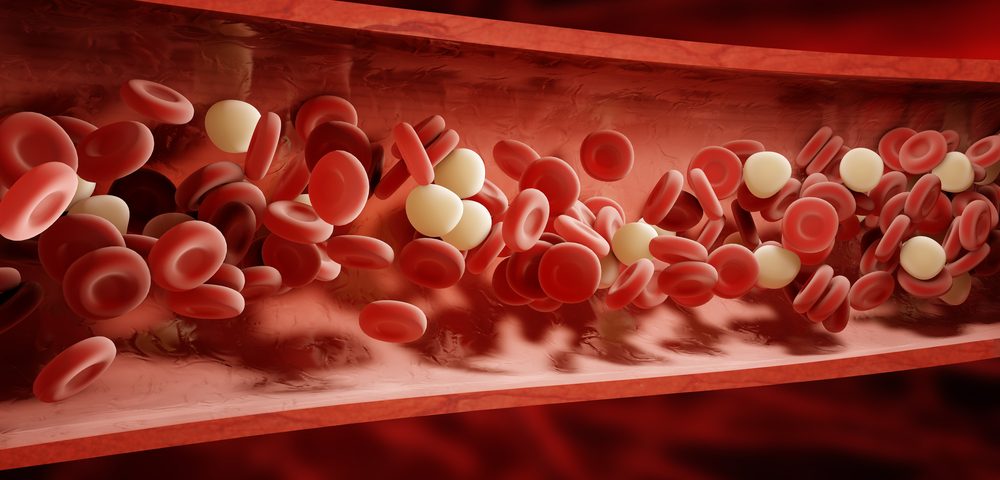Higher Regulatory B-cell Levels Linked to Lower Disease Activity in Primary Sjögren’s Syndrome, Study Says
Written by |

Immune regulatory B-cells (Bregs) are less abundant in patients with primary Sjögren’s syndrome, and are inversely correlated with disease activity, a study suggests.
Therefore, low blood Bregs may help to discriminate between patients and healthy subjects, and assist doctors in diagnosis, especially when patients lack the classical signs of the disease.
The findings were discussed at the recent Annual European Congress or Rheumatology (EULAR 2019) in Madrid, Spain, in a presentation titled “Clinical Associations and Diagnostic Potential of Regulatory-like B-cells in Sjogrën’s Syndrome.”
Several immune cell types, including T- and B-cells, macrophages, dendritic cells, and tissue-resident cells, have been associated with primary Sjögren’s syndrome (pSS), a chronic autoimmune disorder whose hallmark symptoms are dryness of the eyes, mouth, and other body parts.
B- and T-cells, or lymphocytes, are typically considered positive regulators of immune responses. However, a group of regulatory cells — called Bregs and Tregs — work to keep immune responses in check and avoid uncontrolled responses that can harm the body.
Breg and Tregs have been an active field of research in Sjögren’s syndrome. Increasing evidence has shown that Bregs play a protective role in a variety of auto-inflammatory diseases such as Sjögren’s by preventing or suppressing autoimmune responses.
Bregs can exert these beneficial effects, at least in part, by secreting a signalling molecule called interleukin-10 (IL-10) which triggers the expansion or the activity of Tregs.
To provide new insights on the role of regulatory B-cells in Sjögren’s syndrome, a team led by Filipe Barcelos, MD, from the Portuguese Institute of Rheumatology and Nova Medical School, in Portugal, looked at the distribution of Bregs and Tregs in the bloodstream of 57 patients and 24 healthy controls, and evaluated the relationship between these immune cells and disease activity.
EULAR Sjögren’s syndrome disease activity index (ESSDAI), a physician-reported instrument specific for primary Sjögren’s syndrome, was used to measure disease activity.
The results demonstrated that, compared with healthy people, patients had significantly lower percentages (16.9% versus 32.0%) and absolute numbers of Bregs. Specifically, patients had less of a group of cells rich in Bregs termed CD24hi CD27+ B-cells, which are characterized by a high (‘hi’) expression of the CD24 marker and positivity (‘+’) for CD27.
Among patients, Bregs tended to be less abundant in the blood of those positive for anti-SSA autoantibodies (15.0%), compared with anti-SSA-negative patients (19.6%).
Although Breg frequencies did not differ between patients with active (27 patients) and inactive disease (30 patients), patients with highest disease activity (scoring 5 or higher on ESSDAI) had somewhat lower absolute Breg counts.
Overall, ESSDAI scores were negatively correlated with the absolute numbers of either Bregs and Tregs — in other words, the greater the blood levels of Bregs, the lower the disease activity.
This relationship was even stronger in patients with worse disease activity (ESSDAI 5 or higher). The researchers also identified a cell number cut-off (and other cell ratios) that could discriminate primary Sjögren’s syndrome patients from healthy controls, with a specificity of 0.83 and sensitivity of 0.75. (Specificity is the probability that a healthy patient will be identified correctly while sensitivity is the probability that a Sjögren’s syndrome patient will be identified correctly).
“Our findings demonstrated a significant decrease in the Breg-enriched CD24hi CD27+ B-cell subset in pSS, which presented a negative correlation with the disease activity,” the researchers wrote.
“We have demonstrated significant differences in the CD24hi CD27+ B-cell subset and respective ratios, presenting a good discriminatory capacity compared to [healthy controls]. Therefore, this subset may have diagnostic utility in pSS, as it may support the presence of immune dysregulation in suspected cases that don’t fulfil the pSS classification criteria,” they said.
However, larger and prospective studies are needed to confirm the diagnostic potential of Bregs, the researchers added.





